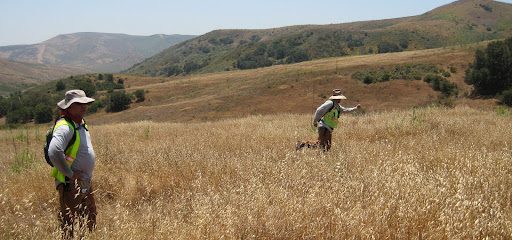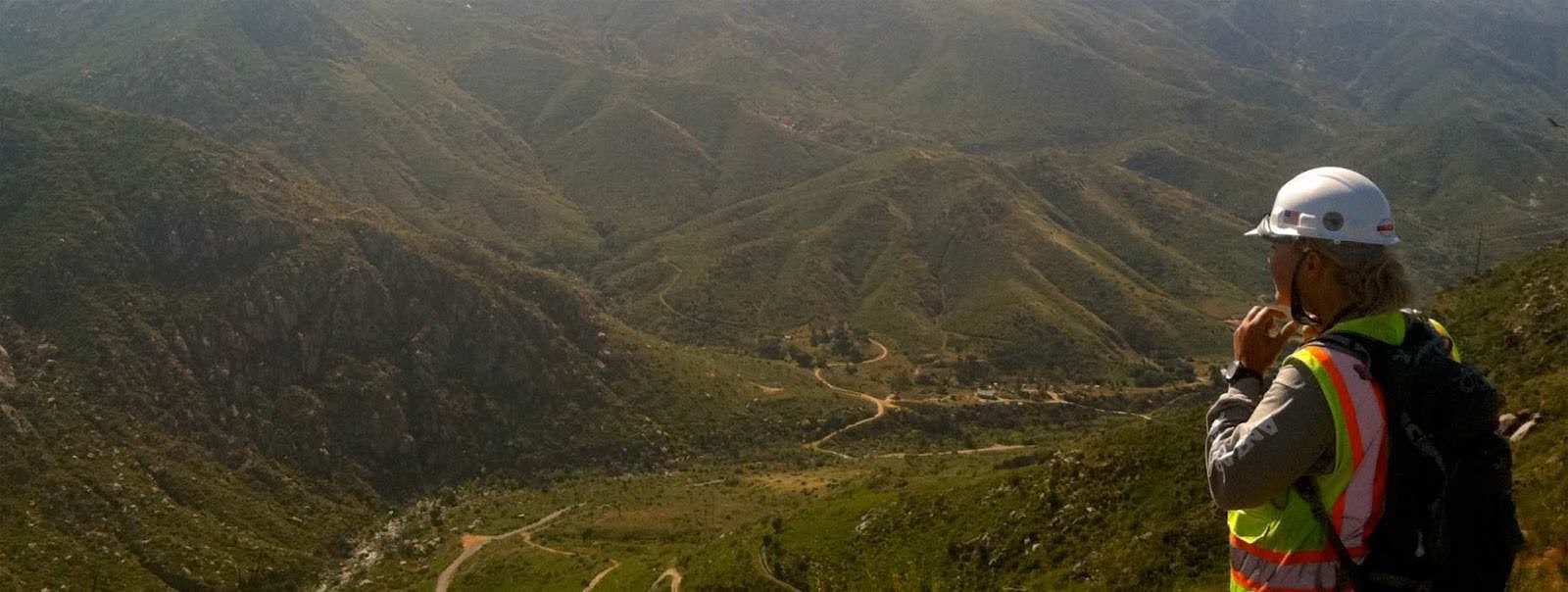Why You Might Need a Biological Monitor for Your Project

SummitWest biologists hard at work — and having a little fun — in the foothills of California
When planning a development project, whether it’s constructing a new building, installing infrastructure, or conducting site excavation, it’s essential to consider the potential impact on the surrounding environment. One often overlooked, but critical, aspect of environmental management is biological monitoring. If your project involves any activities that could affect local wildlife or habitats, a biological monitor can play a key role in ensuring compliance with environmental regulations, safeguarding biodiversity, and preventing costly delays.
In this blog post, we’ll explain what a biological monitor does, why they’re needed, and how they can help you navigate complex environmental considerations during your project.

What is a Biological Monitor?
A biological monitor is an environmental professional who specializes in overseeing a project’s impact on biological resources, particularly wildlife and plant life. They are typically required during fieldwork or construction activities to ensure that any actions taken do not disturb sensitive species or habitats. Biological monitors are highly trained in identifying various plant and animal species and understanding their ecological significance.
These professionals are especially important when a project is located in areas with protected species, critical habitats, or natural resources that require special attention according to local, state, or federal regulations. Their role is to monitor the environment and ensure that the project adheres to the necessary permits, mitigation measures, and environmental laws.
Monitors observe the site and construction activities, documenting their findings and submitting reports accordingly. While they do not direct construction, their presence provides valuable legal protection for the construction firm by demonstrating compliance with environmental regulations and ensuring no harm comes to sensitive resources. Monitors can also raise concerns proactively if they notice potential issues. Although they don’t have authority over construction decisions, they may point out when an activity appears outside the scope of the environmental permit—helping to prevent potential non-compliance or Environmental Events, which are best avoided.

A rare sighting of the gray vireo (Vireo vicinior), a sensitive species whose survival depends on the preservation of its unique habitat in California
Why Do You Need a Biological Monitor?
- Compliance with Environmental Regulations
California, and many other states, have stringent environmental laws that protect endangered species, wetlands, and habitats. A biological monitor ensures your project complies with regulations like the Endangered Species Act (ESA), California Endangered Species Act (CESA), the Migratory Bird Treaty Act, and more. These laws protect species and habitats that could be affected by construction, excavation, and other activities that disturb the land.
Without proper monitoring, your project may risk violating these laws, potentially leading to penalties, project delays, or even having your project halted altogether.
- Preventing Harm to Sensitive Species and Habitats
Many development sites are located near sensitive or protected ecosystems, such as wetlands, forests, or coastal areas. These environments can host unique species that require careful management to avoid harm. A biological monitor’s role is to assess the site before work begins, identify any species of concern, and ensure that any disruption to their habitat is avoided.
For instance, if your project is near a known California red-legged frog habitat or involves work in the vicinity of sensitive bird species like the California least tern, a biological monitor can guide you in implementing avoidance measures, such as limiting construction activities during certain seasons or using barriers to keep animals away from disturbed areas.
- Implementation of Mitigation Measures
Biological monitors play an important role in ensuring that the mitigation measures outlined in your environmental impact reports (EIRs) are properly implemented. These measures could include relocating species, enhancing habitats, or limiting the construction timeline to avoid nesting seasons for birds. The biological monitor ensures that these strategies are carried out as planned, reducing the risk of environmental damage.
Additionally, they provide real-time observations and feedback, ensuring that the mitigation strategies are effective and adjusting them if unexpected issues arise. This continuous oversight is crucial for maintaining regulatory compliance throughout the project’s lifespan.
- Risk Reduction and Avoiding Project Delays
Environmental concerns can be a major source of delay in construction projects. Without a biological monitor, you may unknowingly impact a sensitive species or habitat, triggering a regulatory review or legal challenge. Biological monitors help identify and address potential issues early on, ensuring that your project stays on track and minimizing the chances of unforeseen interruptions.
By proactively identifying sensitive biological features and implementing avoidance or mitigation strategies, biological monitors reduce the likelihood of work stoppages, fines, or lawsuits, saving you time and money in the long run.
- Expert Guidance and Field Knowledge
Biological monitoring is a specialized skill that requires in-depth knowledge of the local ecology, species, and ecosystems. Biological monitors are trained to recognize species in the field, assess the potential impact of construction activities, and provide expert advice on how to proceed safely.
Whether your project involves soil disturbance, waterway alterations, or tree removal, biological monitors have the expertise to ensure that activities are conducted with minimal environmental impact. Their knowledge can be invaluable in avoiding mistakes that could harm the environment or lead to regulatory challenges.
- Community and Stakeholder Relations
In many communities, especially those with active environmental groups or residents concerned about conservation, having a biological monitor on-site can help build trust and transparency. It demonstrates that you are committed to environmental stewardship and are taking proactive measures to protect the local ecology.
A biological monitor can also serve as a liaison between the project team, regulatory agencies, and the community, ensuring that everyone is informed and that concerns are addressed promptly.
- When Is a Biological Monitor Needed?
A biological monitor may be required for your project if any of the following apply:
- Your project is located in or near sensitive habitats like wetlands, forests, or near a known wildlife corridor.
- Your project site is known to support endangered or threatened species, including plants, amphibians, birds, mammals, or fish.
- Activities will involve ground disturbance (e.g., grading, excavation, or tree removal) in areas that could impact wildlife.
- Your project triggers requirements from CEQA (California Environmental Quality Act) or NEPA (National Environmental Policy Act), which often mandate biological assessments.
- You need to implement mitigation measures as part of your development permits to avoid environmental harm.

A biological monitor is an invaluable resource for projects that may impact biological resources. They help you stay in compliance with environmental regulations, prevent harm to wildlife, and reduce the risk of delays or legal complications. Whether you are working on a large-scale infrastructure project, residential development, or anything in between, having a biological monitor on your team ensures that your project moves forward responsibly, with respect for the natural environment.
At SummitWest Environmental, we specialize in providing biological monitoring services tailored to your project’s needs. If you’re concerned about environmental compliance or need guidance on how to protect local wildlife, our team of experts is here to help.

